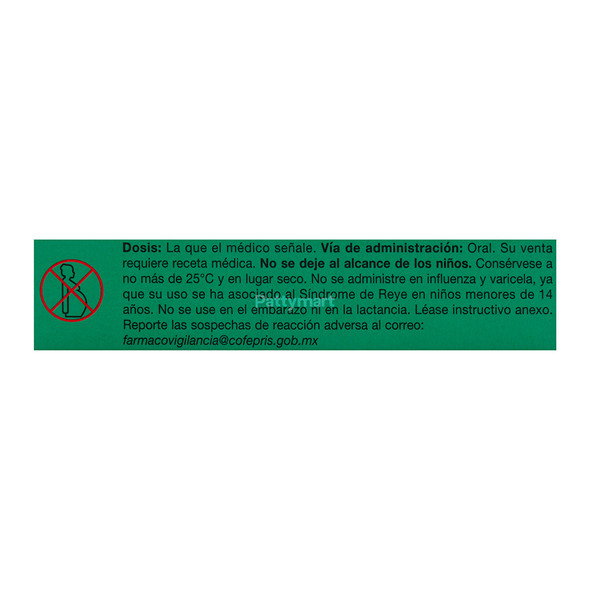Description
Uses: It is mainly used for:
- Prevention of cardiovascular events such as heart attacks and strokes in patients at risk.
- Reduction of the risk of thrombosis in people with a history of cardiovascular disease.
- Management of stable or unstable angina pectoris.
- Secondary prevention after acute myocardial infarction or stroke.
Ingredients: Acetylsalicylic acid (ASA) 100 mg.
Mode of use:
Usual dose: 1 tablet (100 mg) daily, preferably at the same time.
Administration: Take with water, without chewing or crushing, ideally after a meal to reduce the risk of gastric irritation.
Duration: Depends on medical indication, generally it is a long term treatment.
Contraindications: Do not use in the following cases:
- Allergy to acetylsalicylic acid or NSAIDs (ibuprofen, naproxen, etc.).
- Bleeding disorders or predisposition to bleeding.
- Active gastric or duodenal ulcers.
- Asthma induced by ASA or NSAIDs.
- Severe hepatic or renal insufficiency.
- Use in children and adolescents with viral infections (due to risk of Reye's syndrome).
- Pregnant women in the third trimester.
_________________________________________________________________________________________________________________________________
Usos: Se usa principalmente para:
- Prevención de eventos cardiovasculares como infartos y accidentes cerebrovasculares en pacientes con riesgo.
- Reducción del riesgo de trombosis en personas con antecedentes de enfermedades cardiovasculares.
- Manejo de la angina de pecho estable o inestable.
- Prevención secundaria tras un infarto agudo de miocardio o un accidente cerebrovascular.
Ingredientes: Acido acetilsalicílico (AAS) 100 mg
Modo de uso:
- Dosis usual: 1 comprimido (100 mg) al día, preferiblemente a la misma hora.
- Administración: Tomar con agua, sin masticar ni triturar, idealmente después de una comida para reducir el riesgo de irritación gástrica.
- Duración: Depende de la indicación médica, generalmente es un tratamiento a largo plazo.
Contraindicaciones: No usar en los siguientes casos:
- Alergia al ácido acetilsalicílico o AINEs (ibuprofeno, naproxeno, etc.).
- Trastornos hemorrágicos o predisposición a sangrados.
- Úlceras gástricas o duodenales activas.
- Asma inducida por AAS o AINEs.
- Insuficiencia hepática o renal severa.
- Uso en niños y adolescentes con infecciones virales (por riesgo de síndrome de Reye).
- Mujeres embarazadas en el tercer trimestre.














